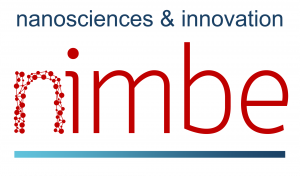Manuscript of the thesis
Abstract:
Nanodiamonds (NDs) are an emerging class of sustainable, metal-free photocatalysts with strong potential for environmental applications. Although their wide band gap of 5.5 eV would typically restrict photocatalytic activity to the UV region, recent studies have unexpectedly demonstrated that they can also exhibit photoactivity under visible light. Nevertheless, the fundamental mechanisms governing light-nanodiamond interactions remain poorly understood.
This PhD work seeks to both enhance nanodiamond photoactivity in the visible range and elucidate the underlying processes that control their light-matter interactions. Highly crystalline nanodiamonds were engineered based on three key parameters to yield well defined samples with (i) (ii) (iii)
- a controlled surface chemistry,
- a tunable particle size, and
- a varying sp2 carbon amount at nanodiamond surface.
A comprehensive set of advanced characterization techniques (XPS, FTIR, Raman spectroscopy, XRD, DLS, SEM, HR-TEM) was employed to precisely determine the chemical and structural properties of the materials. In particular, synchrotron-based X-ray photoelectron spectroscopy (XPS) and Near Edge X-ray Absorption Fine Structure (NEXAFS) was applied to both raw nanodiamonds and colloidal suspensions, providing precious insights into their surface chemistry and electronic structure. By correlating these controlled modifications with photoactivity performance, measured through time-resolved microwave conductivity (TRMC), this work disentangles the contributions of surface chemistry and hybridization state to nanodiamond photoactivity. This dual strategy, combining fundamental insights into nanodiamond electronic structure with practical approaches to band-gap engineering establishes a clear pathway toward the development of nanodiamonds as ecient visible-light-active photocatalysts.
Keywords:
Ingénierie de la bande interdite de nanodiamants pour la photoactivité dans le visible
Manuscrit de la thèse
Résumé :
Les nanodiamants (NDs) constituent une nouvelle classe de photocatalyseurs durables, sans métaux, et sont d’excellents candidats pour des applications environnementales. Si leur large bande interdite de 5,5 eV les limitent théoriquement à une activité photocatalytique sous lumière UV, des études récentes ont montré que les nanodiamants pouvaient également présenter une photoactivité sous lumière visible. Néanmoins, les mécanismes fondamentaux qui gouvernent les interactions entre la lumière et les nanodiamants restent encore mal compris.
Ce travail de thèse vise à la fois à améliorer la photoactivité des nanodiamants dans le domaine visible et à mieux comprendre les processus fondamentaux qui contrôlent leurs interactions lumière-matière. Des nanodiamants présentant initialement une très bonne cristallinité ont été modifiés selon trois paramètres clés afin de produire des nouveaux matériaux présentant
- une chimie de surface finement contrôlée,
- un diamètre ajustable, et
- une quantité variable de carbone sp2 à la surface
Des techniques de caractérisation avancées (XPS, FTIR, spectroscopie Raman, DRX, DLS, MEB, HR-TEM) ont été employées afin de déterminer avec précision les propriétés chimiques et structurales des matériaux. En particulier, l’utilisation du rayonnement synchrotron pour la spectroscopie de photoélectrons X (XPS) et la spectroscopie des structures fines d’absorption X proches du seuil (NEXAFS) sur des nanodiamants bruts et sur des suspensions colloïdales a fourni des informations précieuses sur la chimie de surface et la structure électronique des nanodiamants. En corrélant ces modifications contrôlées avec la photoactivité mesurée par conductivité microonde résolue en temps (TRMC), ce travail de thèse met en évidence les contributions respectives de la chimie de surface et de l’état d’hybridation sur la photoactivité des nanodiamants. Cette double approche, combinant une compréhension fondamentale de la structure électronique des nanodiamants avec des stratégies pratiques d’ingénierie de la bande interdite ouvre la voie au développement de nanodiamants efficaces comme photocatalyseurs actifs sous lumière visible.
Mots-clés :





